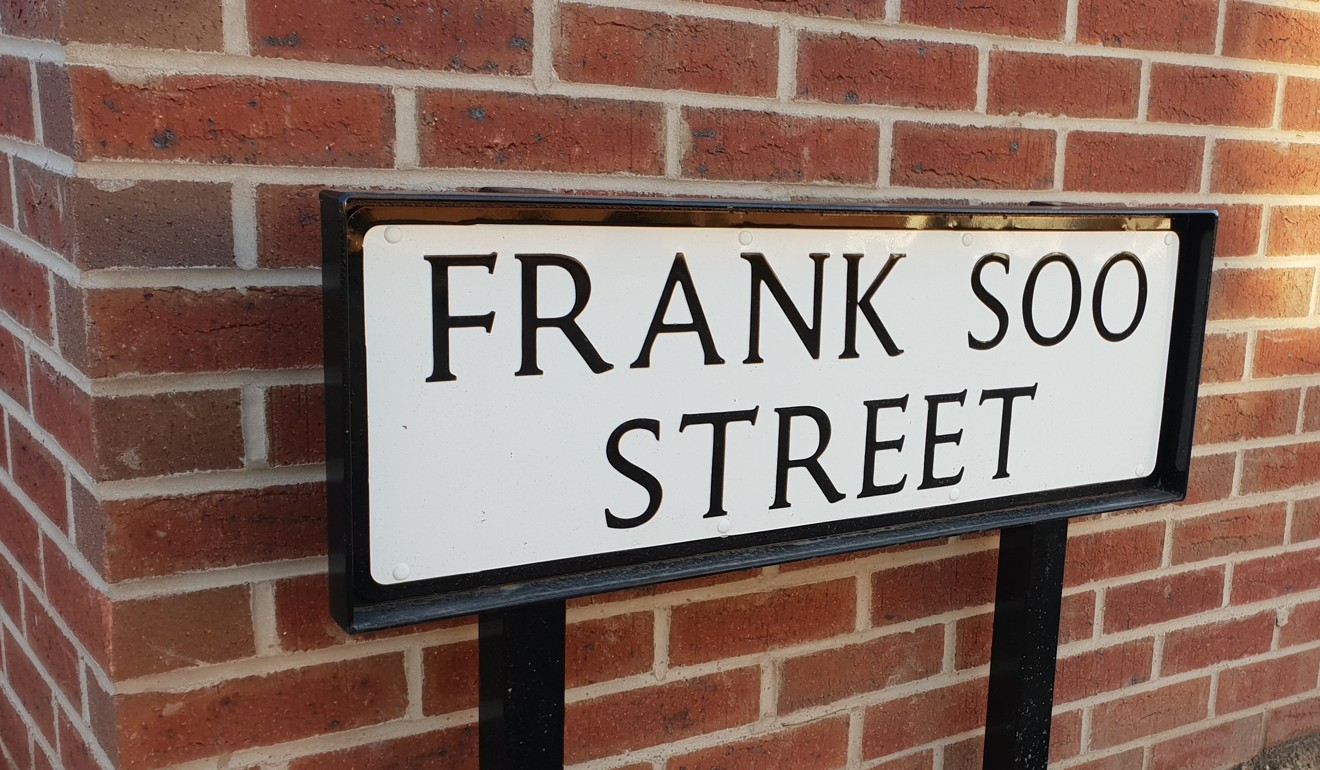
Frank Soo Street hopes to put England’s pioneering Asian footballer on the map on site of former Stoke City stadium
- Midfielder represented Three Lions in nine games during wartime and is still the only player of East Asian heritage to do so
- Pioneer went on to coach around the world but is best known for his time at the club where he made his debut in 1933
Frank Soo is not a name known to many but one English property developer is trying to change that.
Soo was the first non-white player to represent England at football and remains the only Asian to have played for the Three Lions.
The midfielder played for England during the second world war in several Wartime and Victory internationals.
His first appearance was in 1942, 36 years before Viv Anderson became the England senior side’s first black player in 1978.
Soo’s nine caps are all unofficial as the Football Association does not recognise games when the league was suspended for war. Injury prevented him from earning a full cap after the war.

“Our Victoria Park development is being delivered on the former Victoria Ground, which was Stoke City’s home for over a century,” said Gillian Sabin, sales and marketing director at property developer St. Modwen Homes.
“We are very keen that the site continues to play a role in the community, and one way of doing this is by naming the streets in honour of legendary Stoke City players.
“Frank Soo was chosen because he was the first player of Chinese origin to play in the English Football League.
“The inspirational player is often referred to as the forgotten man of twentieth-century football, so this street name will help his memory live on.”
The street sign went up in November ahead of residents moving into their new homes at the end of the month.
Soo’s England appearances came while he was working at the Michelin factory in Stoke and when he was later called up to the RAF, whose football side he would captain. He also represented Stoke City, Everton and Chelsea during the war.
Born to a Chinese father and English mother, Soo was raised in Liverpool and before war broke out the midfielder had been one of the stars of a Stoke City side that included Stanley Mathews, a player he would play alongside for club and country.
Soo had become the first player of Chinese heritage to play in the English Football League, with his Stoke debut coming in 1933.
He left Stoke for Leicester City and once his playing days ended he moved into management.
This took him around the world with spells at Italian side Padova, Scunthorpe United and in charge of the Norway team at the 1952 Olympics in Helsinki.
It was in Scandinavia where he spent most of his time at clubs including Swedish giants AIK Stockholm.
He was also linked with managing the Hong Kong team at one point.
The street is not the only way that people are trying to preserve the memory of the first and so far only Asian player to represent England – a remarkable feat given over 1,000 players have turned out for the Three Lions during the past 140 years.
A biography, The Wanderer: The Story of Frank Soo, written by Susan Gardiner was published in 2016 and it is awaiting being published on the Mainland having been translated into Chinese.
“I first came across Frank Soo when I was researching football in the 1930s for my first book,” she said. “I was puzzled because I’d never heard of him, so I decided to find out a little bit more about him and the more I found out, the more astonished I was that this extremely talented footballer – who had been famous around the world for thirty years – had been forgotten.
“He was an inspirational person and deserves to take his place among the great figures in world football history.”
The author is also part of the Frank Soo Foundation, which was set up to bring through the next England player of East Asian heritage.
The Frank Soo Foundation’s Chinese Community Challenge Cup, an annual five-a-side tournament will mark its 10th year in 2019, while they have organised games in London, Manchester and Birmingham.
There is talk also of Stoke opening a museum at the Bet365 Stadium and a Soo exhibit has been mentioned in proposals.
Soo, who died near Stoke in 1991, has joined the ranks of footballers with streets named after them.
Sir Matt Busby Way, named after the Manchester United manager who was a peer of Soo’s in his playing and service days, and Sir Alex Ferguson Way are outside the club’s Old Trafford Stadium, while one of Ferguson’s players, Park Ji-sung, had a motorway named after him in his native South Korea.
There is an Alan Shearer Way in Blackburn named after the former Rovers striker, while Sydney’s Cahill Expressway was temporarily renamed the Tim Cahill Expressway after the Socceroos qualified for the World Cup.
Nigeria striker Emmanuel Eminike has a street named after him in Lekki, Nigeria, while Avenida Jose Mourinho is a beachside promenade in the coach’s hometown of Setubal, Portugal.

